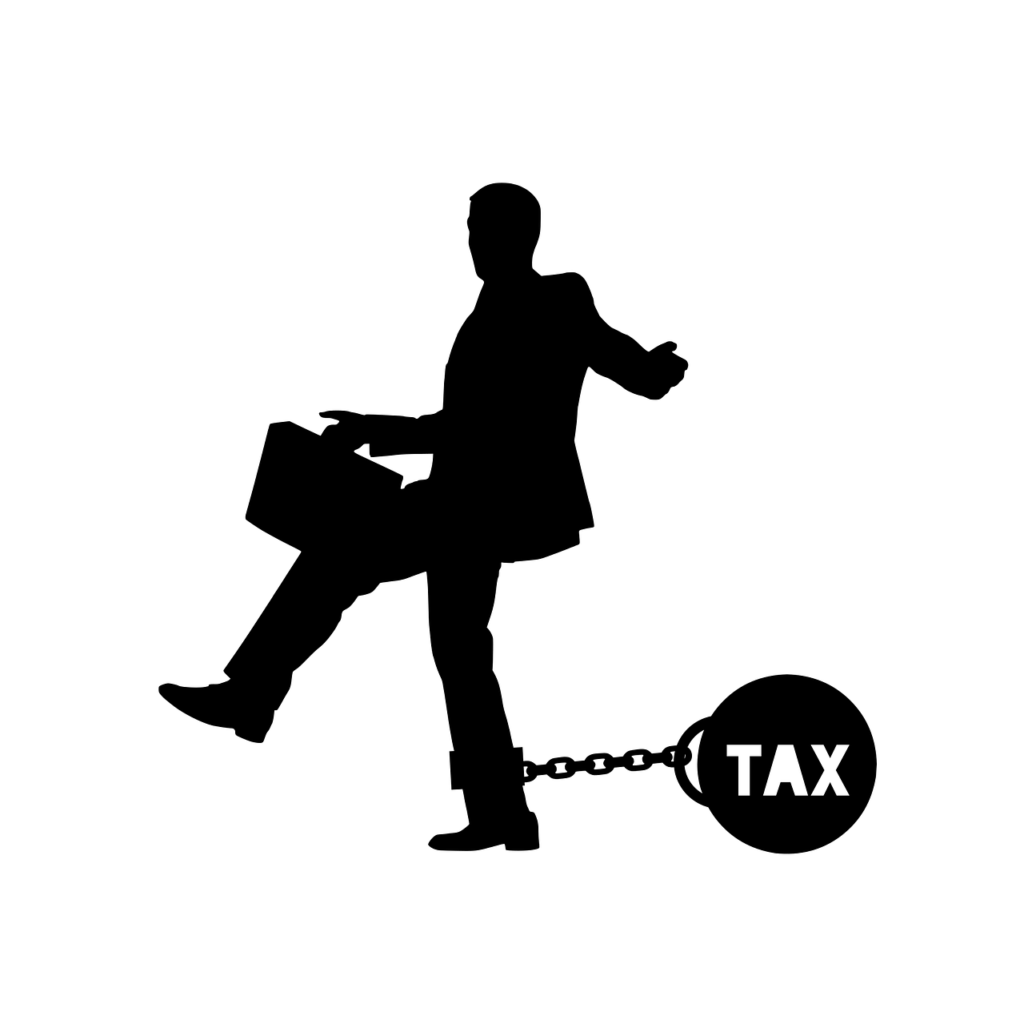So, you’ve made a purchase and now find yourself in a bit of a pickle. Maybe the product didn’t live up to your expectations, or perhaps it arrived damaged. Don’t worry, we’ve got your back! In this article, we’ll break down refund policies, those sometimes-confusing documents that outline what you can and can’t do when seeking a refund. From understanding the terms and conditions to navigating the process, we’ve got all the information you need to ensure a hassle-free return experience. So, sit back, relax, and let’s unravel the mysteries of refund policies together!

Types of Refund Policies
Full Refunds
A full refund policy means that if you are not satisfied with your purchase for any reason, you will receive a complete refund of the amount you paid. This type of policy is often offered by retailers who have a lot of confidence in their products or services. It gives you peace of mind knowing that you can return the item and get your money back in its entirety.
Partial Refunds
Partial refund policies are a bit different. With this type of policy, you will receive a refund for a portion of the amount you paid. This often happens when you return a product that has been used or has some damage. The retailer will deduct a certain percentage from the original price to compensate for the decrease in value. While it may not be as ideal as a full refund, it is still better than getting no refund at all.
Store Credit Refunds
Store credit refunds are another type of refund policy that you may encounter. Instead of receiving your money back, the retailer will issue you store credit that can be used for future purchases. This can be a good option if you shop frequently at that particular store or if you don’t mind browsing their products. Store credit refunds are often offered when the retailer wants to retain your business and hopes that you will continue to shop with them.
Exchange-only Refunds
An exchange-only refund policy means that you cannot receive a refund in cash or store credit. Instead, the retailer allows you to exchange the product for something of equal or lesser value. This type of policy is commonly found in clothing stores or when you purchase items that have specific color or size requirements. It’s important to check if the retailer offers exchange-only refunds before making a purchase, especially if you are unsure about the product.
Understanding the Conditions
Timeframe for Returns
The timeframe for returns is an essential aspect to consider when understanding refund policies. Retailers often have specific time limits for returns, ranging from a few days to several weeks. It is important to familiarize yourself with these timeframes to ensure that you still qualify for a refund. Some retailers may refuse to accept returns if the specified timeframe has passed, so be sure to check their policy before it’s too late.
Unused and Unopened Products
In most cases, refund policies only apply to unused and unopened products. This means that if you have used or opened the item, it may be challenging to obtain a refund. Retailers generally have this policy in place to prevent customers from using products for a brief period and then returning them. To avoid any issues, it is advisable to keep the product in its original packaging until you have decided to keep it.
Damaged or Defective Products
If you receive a damaged or defective product, most retailers will offer a refund or replacement. However, some retailers may require evidence of the damage or defect, such as photos or a detailed description. It is crucial to act quickly and notify the retailer as soon as possible to resolve the issue. Keep in mind that the retailer may have specific procedures in place for handling damaged or defective products, so make sure to follow their instructions.
No Returns on Certain Items
It is essential to be aware that certain items may be excluded from a retailer’s refund policy. These can include items like intimate apparel, perishable goods, or items that have been personalized or customized. Additionally, some retailers may have a clearance or final sale section where refunds are not applicable. To avoid any disappointment, always check if there are any exceptions or limitations to the refund policy before making a purchase.
Considerations Before Making a Purchase
Read the Refund Policy
Before making a purchase, it is crucial to read and understand the retailer’s refund policy. Take the time to familiarize yourself with the terms and conditions, including any time limits, requirements, or exceptions. By doing this, you will be prepared and aware of what to expect in case you need to return the product.
Check the Return Shipping Cost
When returning an item, it’s important to consider the return shipping cost. Some retailers offer free return shipping, while others may charge a fee or require you to cover the shipping expenses. Take this into account when deciding whether or not to return the item, as it may impact the overall value of the refund.
Check for Restocking Fees
Restocking fees are charges imposed by some retailers when a product is returned. These fees are intended to cover the cost of processing and restocking the item. Make sure to check if the retailer has any restocking fees and consider these charges when determining if the refund is worth pursuing.
Consider the Timeframe for Returns
As mentioned earlier, each retailer has its own timeframe for returns. Consider this timeframe when deciding whether or not to return a product. If there is a limited window for returns, it may be necessary to act quickly to ensure you are eligible for a refund. On the other hand, if the timeframe is generous, you may have more time to evaluate the product before making a decision.
Tips for a Hassle-free Return
Keep the Original Packaging
One essential tip for a hassle-free return is to keep the original packaging of the product. Retailers often require the item to be returned in its original box or packaging to process the refund. Keeping the packaging in good condition makes it easier for the retailer to restock or resell the item.
Maintain the Product’s Condition
To ensure a smooth return process, it’s important to keep the product in excellent condition. Avoid excessive wear and tear, and be cautious with any additional accessories or components that came with the item. Taking care of the product will increase the likelihood of receiving a full refund.
Follow the Return Instructions
Each retailer may have specific return instructions that need to be followed. It is important to read and follow these instructions carefully to avoid any complications. This may include completing a return form, obtaining a return authorization number, or using a specific carrier to ship the item back.
Track your Return
When returning a product, it is advisable to use a shipping method that provides tracking. This allows you to monitor the return shipment and provides proof of delivery to the retailer. Tracking your return ensures that it reaches the retailer within the specified timeframe and minimizes the risk of any disputes.
How to Initiate a Return
Contact Customer Service
To initiate a return, the first step is to contact the retailer’s customer service department. They will provide guidance on the return process and any specific requirements. Most retailers have multiple contact methods available, such as phone, email, or live chat, making it convenient for you to reach out.
Provide Relevant Information
When contacting customer service, make sure to provide all necessary information related to the purchase. This includes the order number, product details, and any specific concerns or issues you have encountered. Providing accurate and detailed information helps customer service representatives assist you more effectively.
Specify Return Method
Let the customer service representative know what type of return you are requesting, such as a refund, exchange, or store credit. Clarifying your desired outcome ensures that the retailer understands your expectations and can process the return accordingly.
Receive Return Authorization
In some cases, the retailer may require a return authorization number or approval before accepting the return. Once you have provided all the necessary information, the customer service representative will guide you through obtaining the return authorization if it is necessary. Make sure to follow their instructions to ensure a smooth return process.
Refund Process and Timing
Inspection of Returned Product
Once the retailer receives the returned product, they will inspect it to assess its condition and verify its eligibility for a refund. This process typically involves checking for any damage, signs of wear, or missing components. The inspection ensures that the returned product meets the criteria outlined in the refund policy.
Refund Options
After the inspection, the retailer will determine the appropriate refund option based on their policy and your preferences. This could include a refund to your original payment method, store credit, or an exchange for a different product. If there are any specific instructions or preferences regarding the refund, make sure to communicate them during the return process.
Timeframe for Receiving the Refund
The timeframe for receiving a refund varies depending on the retailer and the refund option chosen. In some cases, the refund may be processed within a few business days, while in other cases, it may take several weeks. It is essential to be patient and allow the retailer sufficient time to process the refund.
Follow Up with the Retailer
If you have not received your refund within the expected timeframe, it is advisable to follow up with the retailer. Contact customer service and provide them with any relevant information or documentation regarding your return. They will be able to provide you with updates on the status of your refund and address any concerns or issues you may have.
Exceptions and Limitations
Final Sale Items
Final sale items are items that are explicitly marked as non-returnable or non-refundable. These items are usually sold at a significantly discounted price, and the retailer does not offer any refunds or exchanges. It is important to be aware of these exceptions and carefully consider your purchase before buying final sale items.
Personalized or Customized Products
Personalized or customized products, such as monogrammed items or items made to specific measurements, often cannot be returned or refunded. These products are typically made specifically for the individual customer and cannot be resold. Before purchasing personalized or customized items, ensure that you are fully satisfied with your selection.
Digital Downloads
Digital downloads, including software, music, or e-books, are often non-returnable. This is because these products can be easily duplicated, making it challenging for the retailer to ensure that a returned copy has not been copied or used. It is important to review the product description and any applicable policies before purchasing digital downloads.
Services and Subscriptions
Refunds for services or subscriptions can vary significantly depending on the terms and conditions set by the provider. Some services may offer a trial period with a full refund, while others may have strict cancellation policies. Before committing to a service or subscription, make sure to review the refund policy and understand your rights and obligations.
Understanding International Refund Policies
Varying Laws and Regulations
International refund policies can be complex due to varying laws and regulations in different countries. Each country may have its own consumer protection laws and guidelines that retailers must adhere to. It is important to research and understand the refund policies specific to the country you are purchasing from to avoid any surprises or disputes.
Shipping and Import Costs
When making international purchases, it is essential to consider the additional costs associated with shipping and potential import duties or taxes. In some cases, these costs may not be refundable, even if the product is returned. Be sure to take these expenses into account when evaluating the value of a potential refund.
Currency Exchange Rates
Currency exchange rates can also affect international refund policies. If your purchase involves a different currency, the refund amount may be subject to fluctuation due to exchange rate variations. This can result in a slightly different refund amount than what you initially paid, depending on the prevailing exchange rate at the time of the refund.
Return Shipping Challenges
Returning international purchases can be more challenging due to distance and shipping logistics. International return shipping costs may be higher, and there can be delays or complications along the way. Make sure to consider these factors when deciding if it is worth initiating an international return.
Common Misconceptions About Refund Policies
Assuming All Retailers Have the Same Policy
One common misconception about refund policies is assuming that all retailers have the same policy. In reality, refund policies can vary significantly from one retailer to another. It is important to read and understand the specific policies of the retailer you are purchasing from to ensure you know what to expect.
Believing That All Items Can be Returned
Another misconception is that all items can be returned for a refund. As discussed earlier, there are exceptions and limitations to refund policies. Certain items, such as final sale items or personalized products, may not be eligible for a refund. It is essential to review the refund policy and product description before making a purchase.
Thinking Refunds Are Instantaneous
Many people mistakenly believe that refunds are instantaneous, especially in this digital age. However, the refund process often involves several steps and can take time to complete. The retailer needs to receive and inspect the returned item, determine the appropriate refund option, and process the refund. It is important to have realistic expectations and allow the retailer sufficient time to complete the process.
Failing to Read the Fine Print
One of the most common mistakes people make is failing to read the fine print of a refund policy. The terms and conditions of a refund policy, including any exceptions or limitations, are typically outlined in detail. By not reading and understanding this information, you may be caught off guard if a return does not go as expected. Take the time to review the policies thoroughly to avoid any surprises.
Tips for Negotiating with Retailers
Be Polite and Respectful
When negotiating with retailers regarding a refund, it is crucial to maintain a polite and respectful demeanor. Remember that the customer service representative you are dealing with is there to help you. Being rude or aggressive will not improve your chances of a successful negotiation and may hinder the resolution process.
Know Your Rights
Before entering into a negotiation, educate yourself about your rights as a consumer. Familiarize yourself with the local consumer protection laws and regulations that may be applicable. This knowledge can empower you during negotiations and help you assert your rights effectively.
Provide Evidence if Necessary
If you believe you have a valid reason for a refund or if the product was damaged or defective, it can be beneficial to provide evidence to support your claim. This can include photographs, product documentation, or any relevant correspondence with the retailer. Providing evidence strengthens your case and increases the likelihood of a successful negotiation.
Consider Escalating the Issue
If you are unable to reach a satisfactory agreement with a customer service representative, consider escalating the issue to a higher authority within the retailer’s organization. This could involve speaking with a supervisor or manager who has the authority to make decisions beyond the scope of the initial representative. Escalating the issue can sometimes lead to a more favorable outcome.
By understanding the different types of refund policies, the conditions associated with returns, and the necessary steps for initiating a return, you can navigate the refund process more efficiently and with greater confidence. Remember to always read and understand the refund policy of the retailer you are purchasing from and know your rights as a consumer. By following the tips provided and being proactive in addressing any issues, you can ensure a smoother and more satisfactory experience when dealing with refunds.



